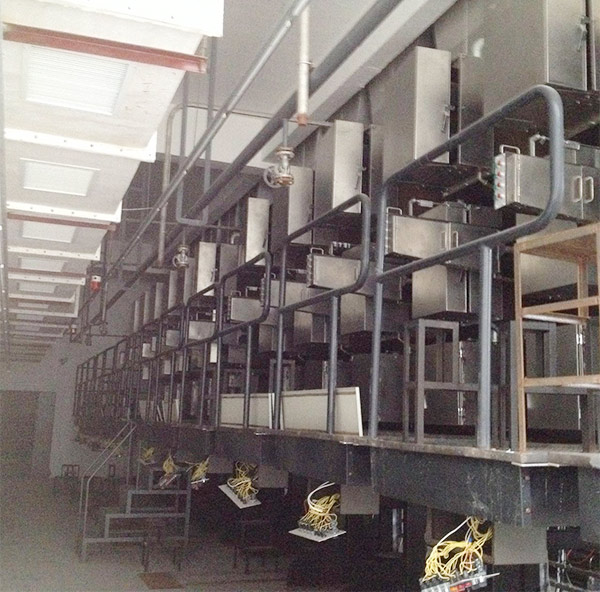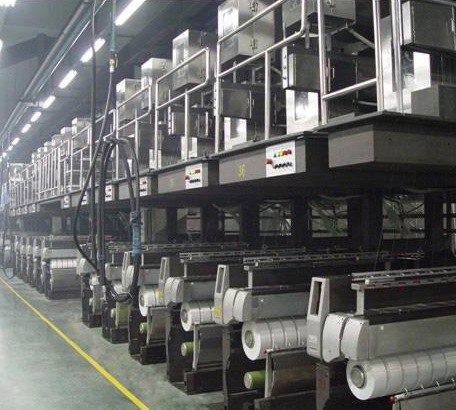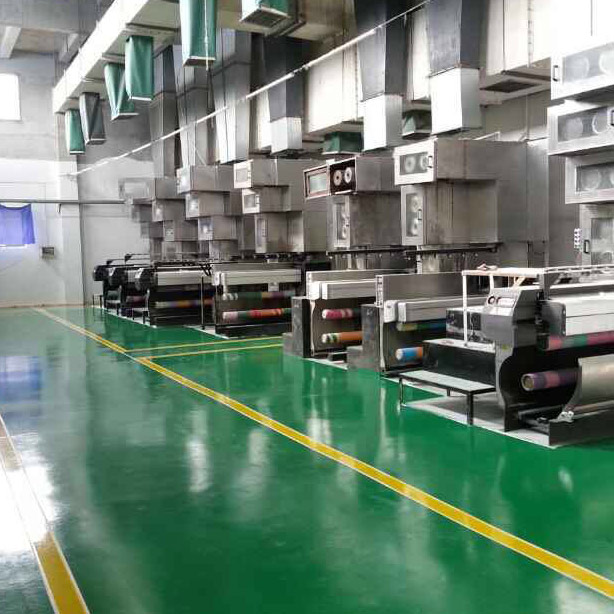- Polypropylene spinning machine
- Polypropylene FDY equipment
- Polyester POY spinning machine
- Polyamide FDY common and high strength equipment
- Polyester FDY equipment
- Polyester high strength equipment
- polyester、Polyamide、 Polypropylene BCF equipment
- Small spinning machine
- All kinds of spinning special parts
- High performance carbon fiber and composite material technology and equipment seminar was held in Shaoxing, Zhejiang Province
- Unlock the secrets of the polypropylene spinning machine
- Textile information | Industry empowerment, when calligraphy meets fabric, Keqiao textile's cultural circle breaking journey!
- Unlock the Xingji password from the spring rhythm, gather the core force of the enterprise team, and explore the strategy of enterprise management!
- Blue and white school uniforms back? From blue and white memory to vintage store fashion products, textile people can seize the flow code!

- Contact:Mr. Huang Guofu
- Cel:0086-13901505556
- Fax:0086-519-83341119
- Email:czfb5556@126.com
- Add:No. 288-8 ChangLi Rd, Huangli Town, Changzhou, JS PRV.
According to the different nature of fiber-forming polymer, chemical fiber spinning methods are melt spinning and melt spinning two categories, in addition, there are special or unconventional spinning method. Among them, according to the different coagulation methods, melt spinning method is divided into two kinds of wet spinning and dry spinning. In the production of chemical fibers, the majority of production by melt spinning, followed by wet spinning production, only a small amount of dry or other unconventional spinning method of production.
one. Melt spinning method
Melt spinning method is the melt spinning through the screw extruder by the spinning pump quantitative extrusion spinneret hole, into a fine stream into the air, and cooled into filaments in the spinning corridor. At present, the melt spinning spinning speed is generally 1000 ~ 2000m / min. Adjustment spinning, up to 4000 ~ 6000m / min. Number of spinneret holes: filaments for the 1 to 150 holes, short fibers for the 400 to 800 holes, up to 1000 to 2000 holes. Spinneret aperture generally 0.2 ~ 0.4mm.
Melt spinning method is characterized by high winding speed, without solvent and precipitant, simple equipment, short process, is an economical, convenient and efficient method of forming. However, the number of spinneret holes is relatively small. In recent years, on the basis of digestion and absorption of imported technologies, our country has developed low-speed porous and high-speed short-range spinning to produce polypropylene and polyester. Synthetic fibers in the polyester, nylon and polypropylene are melt spinning spinning method.
two. Solution spinning method
1. Wet spinning Wet spinning is the solution of the spinning solution obtained from the spinneret hole was extruded into a thin stream, and then solidified into a solidified silk. Due to the slow solidification of the filament, the spinning speed of the wet spinning is low, generally 50-100 m / min. The number of holes in the spinneret is more than that of the melt spun yarn, which usually amounts to 4000-2000 holes. Mixed fiber spinning anti-fiber section were mostly non-circular, and there is more obvious skin core structure, which is mainly caused by the solidification of the solidification fluid.
Wet spinning is characterized by complex processes, large investment, spinning speed is low, high production costs. Generally in the production of short fibers, porous spinneret or spinneret holes can be used to increase the productivity, so as to compensate for the low spinning defects. In general, fiber-forming polymers that can not be melt-spun are wet-spun and produced in the form of short fibers and filaments. Acrylic, vinylon, vinyl chloride and viscose use wet spinning.
2. Dry Spinning Dry Spinning is a spinning solution prepared by solution spinning extruded from a spinneret hole, was fine flow, and then in the hot air due to solvent sonic volatilization and curing into filaments. At present, the dry spinning speed is generally 200 ~ 500m / min, when increasing the length of the spinning shaft or spinning fine fibers, the spinning speed can be increased to 700 ~ 1500m / min. Dry spinning nozzle fewer holes, 300 to 600 holes.
The fibers obtained by dry spinning are compact in structure, have better physical and mechanical properties and dyeing properties, and have higher fiber quality. However, the investment in dry spinning is even bigger than wet spinning, resulting in high production costs and environmental pollution. At present, there are fewer synthetic fibers for dry spinning, and only acetate and polyvinylidene are available for this method. In addition, for both dry spinning, but also wet spinning fibers, dry spinning is more suitable for spinning filaments.
three. Other spinning method
1. Composite fiber spinning method
Composite fiber spinning is the production of two or two spinning fluids of differing chemical compositions or concentrations simultaneously by a spinneret with a special dispensing system. Before entering the spinneret, the two components are separated from each other and are not mixed with each other. At the moment of entering the spinneret, the two liquids come into contact with each other and solidify and adhere to form a single filament, thereby forming a structure having two or more different groups Sub-composite fiber. This method of spinning the fiber is divided into: parallel type, core-type and spread a variety of other.
2. Profiled fiber spinning This method is the use of non-circular spinneret holes, making a variety of different cross-sectional shaped fibers. Common to different fibers are triangular, Y-type, stars and hollow fibers.
3. Coloring fiber spinning method This method is to add a suitable chemical fiber spinning melt or solution of the first color, after spinning directly made of colored fibers, the method can improve the color fastness and reduce dyeing costs, reduce environmental pollution.
In addition, there are phase separation spinning method, jelly spinning method, emulsion or suspension spinning method, liquid crystal spinning and other spinning methods.
Changzhou Fubon Chemical Fiber Machinery Factory mainly produces Polypropylene spinning machine, Polypropylene FDY Spinning Machine, Polypropylene FDY Production Line, Polypropylene FDY Equipment, Polypropylene FDY Machine, Polyester POY Spinning Machine, Polyester POY Production Line, Polyester POY Equipment, Polyester POY Machinery, FDY Spinning Machine, Polyester FDY Spinning Machine, Polypropylene spinning machine, Polyester FDY Production Line, Polyester FDY Machinery, Nylon FDY Spinning Machine, Nylon FDY Production Line, Nylon FDY Equipment, Spandex Spinning Machine, Spandex Production Line, Spandex Equipment, Spandex Machinery, Spinning Parts, Dacron Small Testing Machine, PP Small Testing Machine, Nylon Small Testing Machine, Polypropylene spinning machine.
- Textile information | Industry empowerment, when calligraphy meets fabric, Keqiao textile'
- High performance carbon fiber and composite material technology and equipment seminar was
- Unlock the secrets of the polypropylene spinning machine
- Unlock the Xingji password from the spring rhythm, gather the core force of the enterprise
- Blue and white school uniforms back? From blue and white memory to vintage store fashion p
- China's first cotton suit AI design competition was launched in Shanghai
- Global textile layout - Fubon Machinery Fubon Machinery polypropylene spinning machine tec
- Pay tribute to her power | Fubang machinery with ingenuity to weave on female glory, youth
- 2025 The National two sessions opened, the textile industry can seize the opportunity to f
- High efficiency, energy saving, stability and flexibility - Analysis of the four core adva




